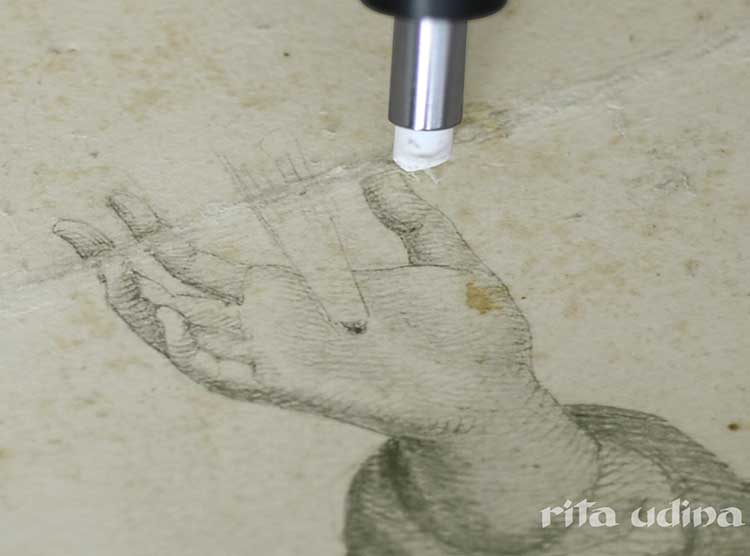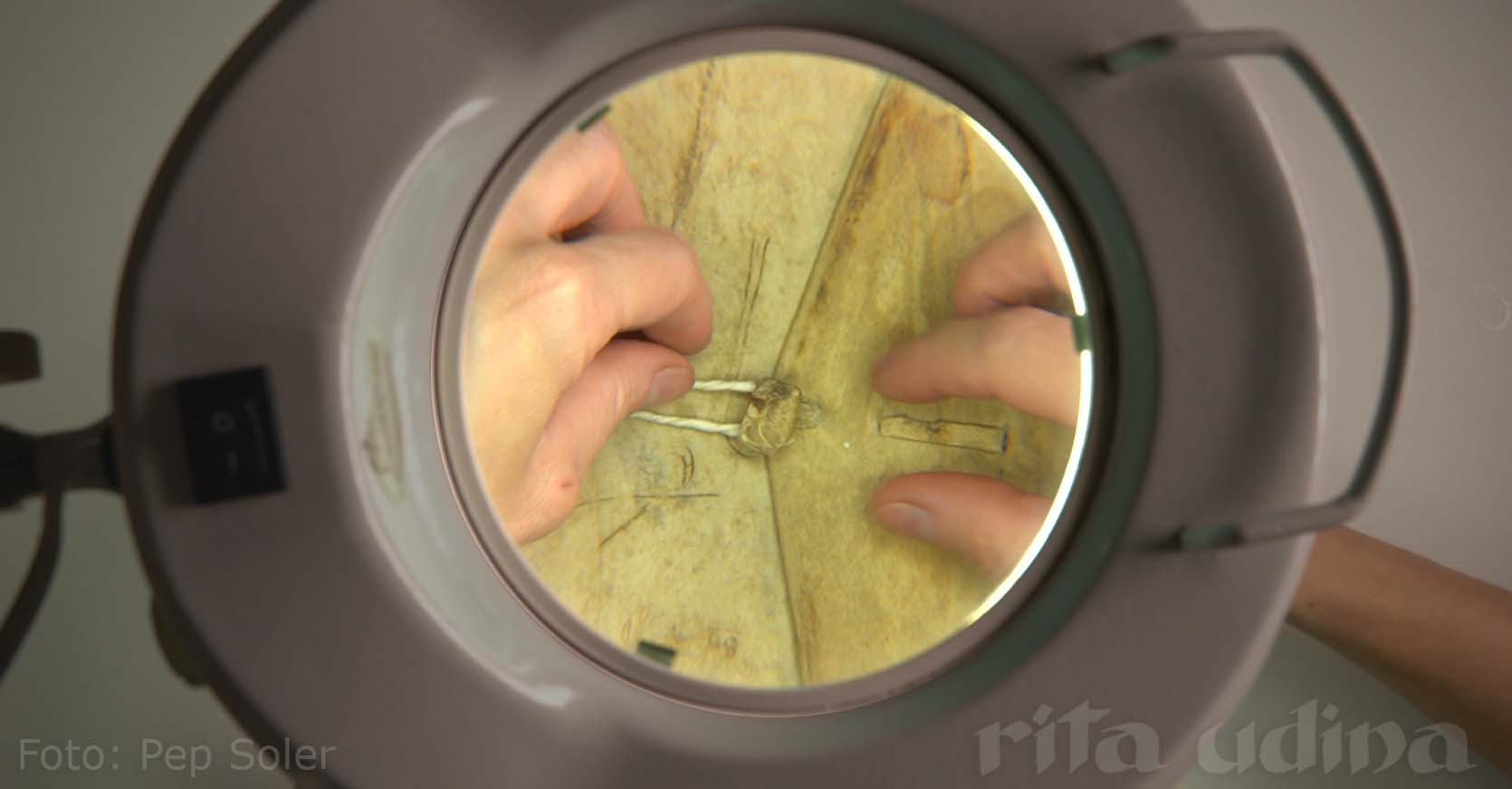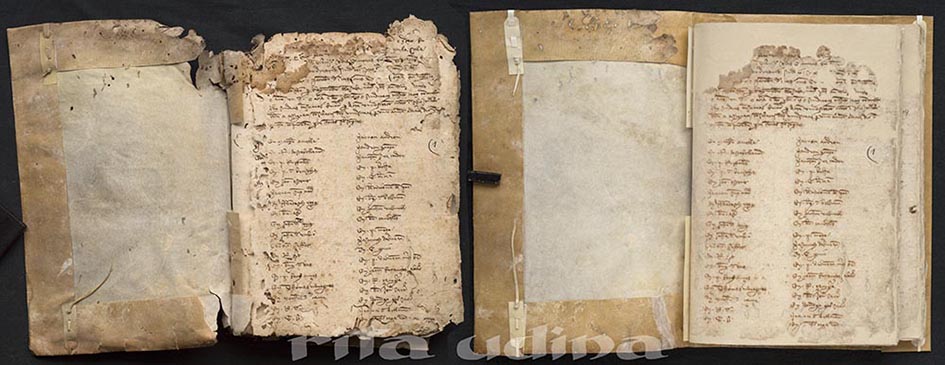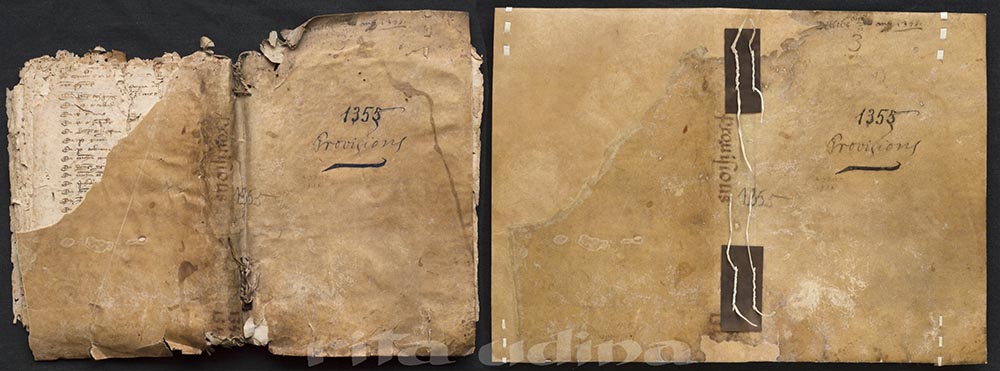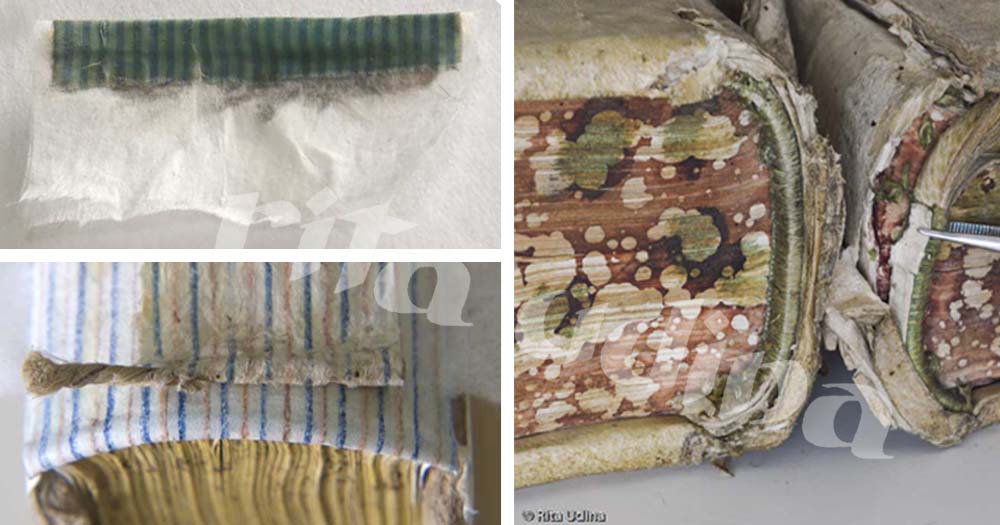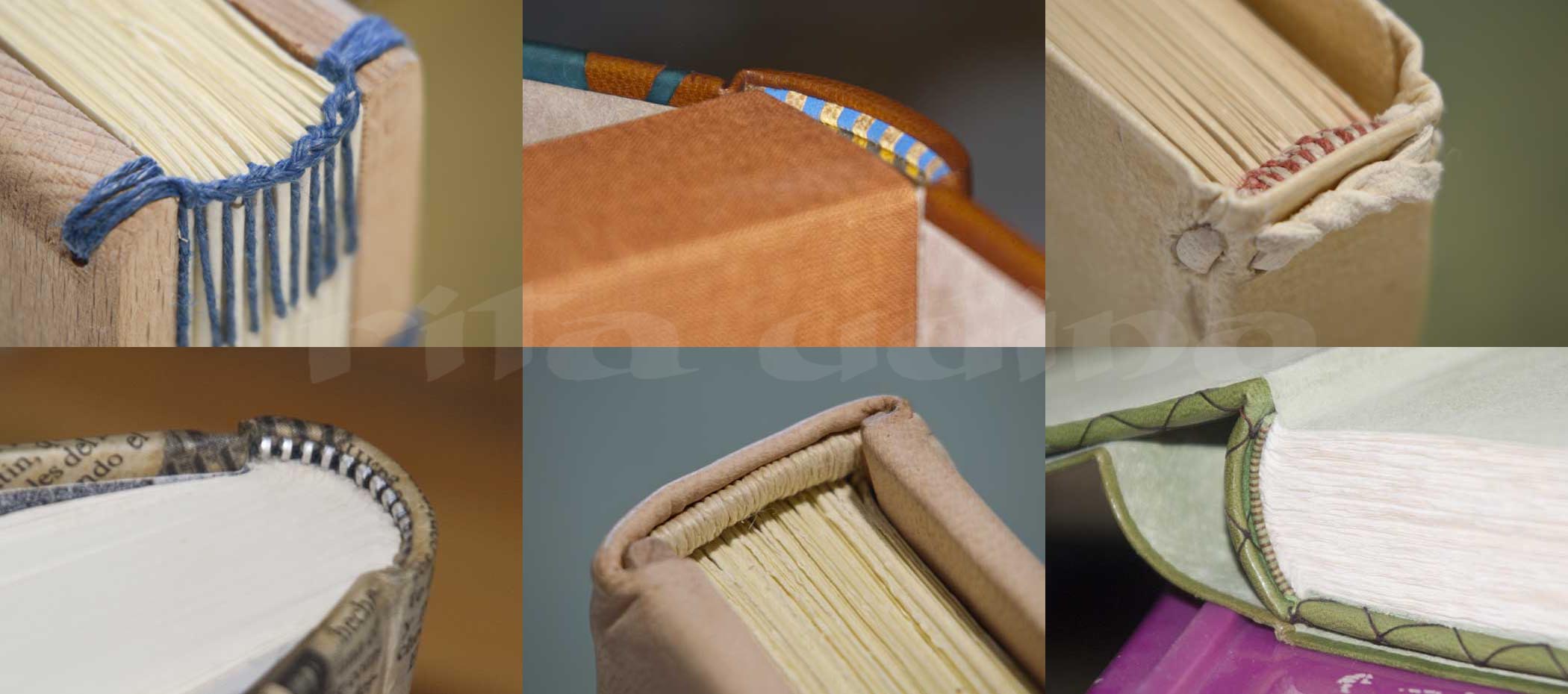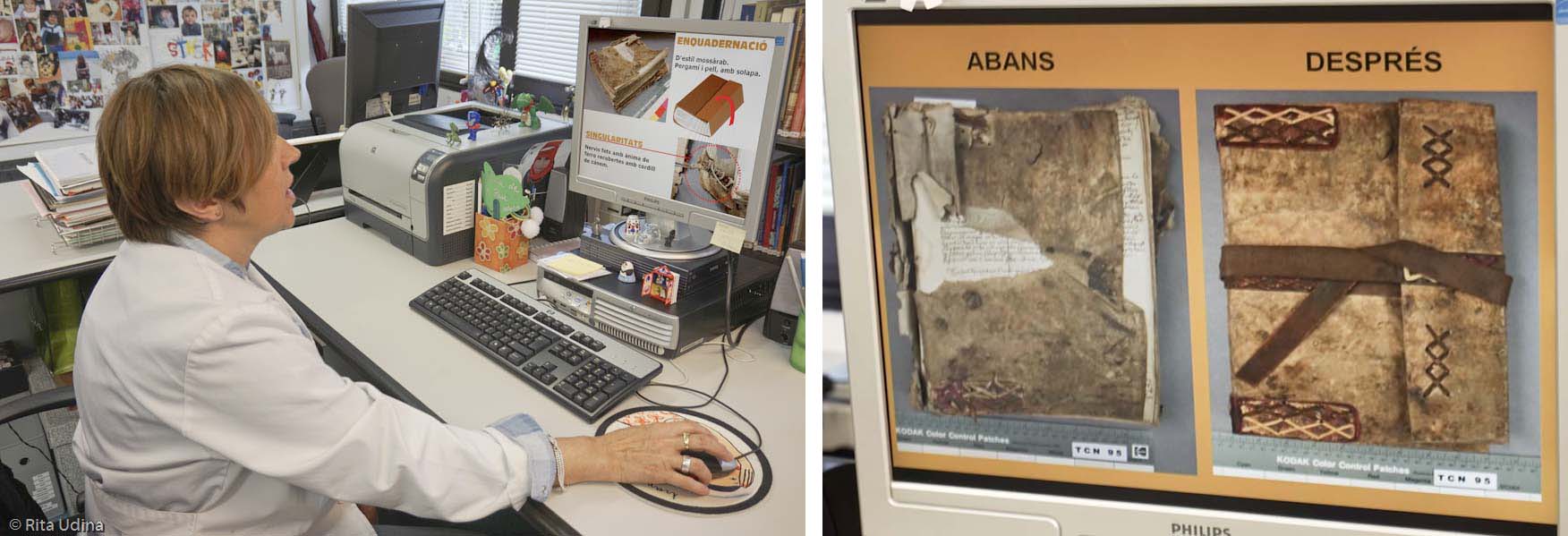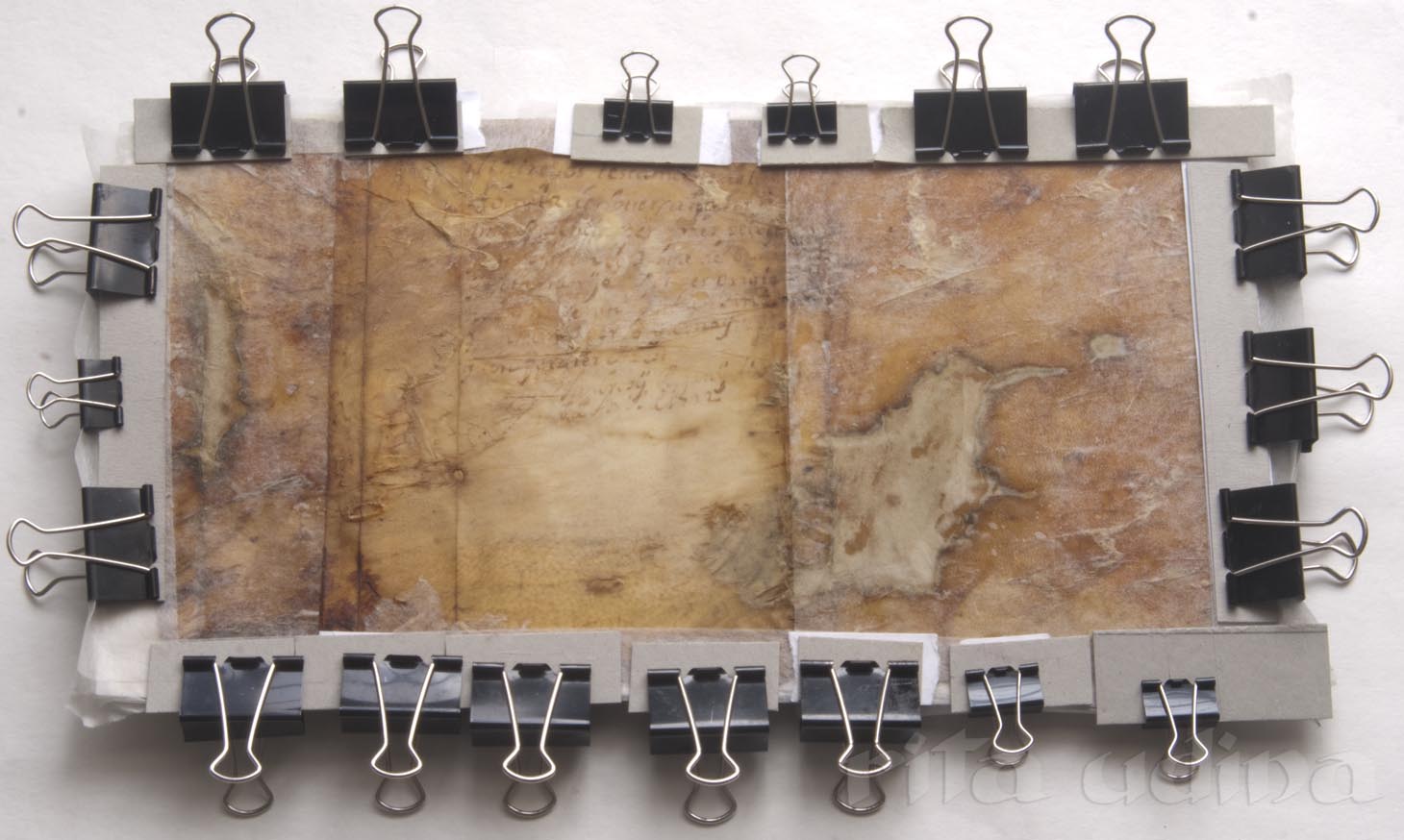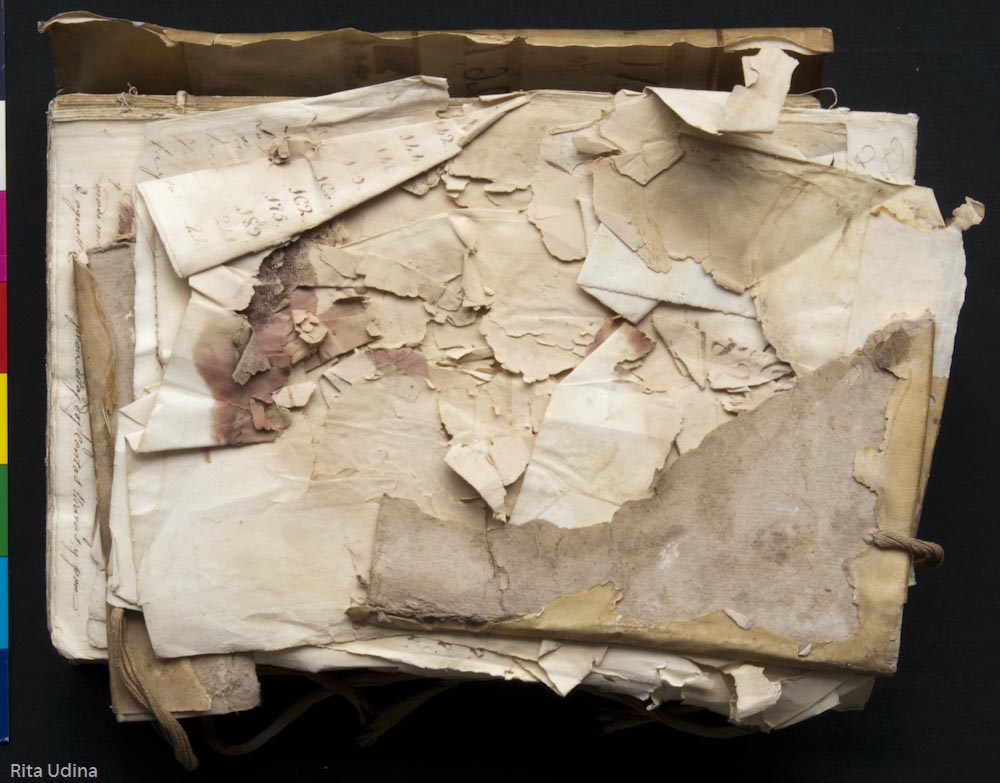limp-vellum binding
Limp vellum bindings are usually made of parchment. A feature of these parchment bindings is their flexibility, since there is no inner support in the covers than the support itself (a parchment). That’s why they are much lighter than bindings that have a board or wood inside the covers.
See below blog posts related to them:
Find below the blog posts related to limp-vellum binding:
Beauty (and Christmas prize!)
Beauty is around us: in the writing of a manuscript, the clasps of a book, the mark of an etching or the traced lines of a drawing. In this year's Christmas there are masters' works by Albrecht Dürer, Jean-Auguste Dominique Ingres, Salvador Dalí, Joan Miró, Sam Cobean, Bruegel, Ramon Casas, an 14th c. manuscript and an Ornithology by Aldrovandi with parchment over stiff boards.
Profession: book and paper conservator
What does a paper conservator do? Whom does she work for? What skills and knowledge does she ought to have? Preservation and conservation, a field linked to science, history and arts and crafts. A video explains what differenciates us from forgers and shows -among other- how we produce a hand-made suction table to restore paper artifacts, with loads of creativity, a feature most necessary to become book and paper conservator.
Christmas angels in serious condition,on their way to full recovery!
Christmas angels currently at ICU in serious condition. Diagnosis: chronical humidity, binding dislocation, a variety of infections and rodent attack. Prognostic is optimistic because a high level team is taking good care of them. Soon they'll be bright and happy as Larry, just like in this year's Christmas greetings. Don't miss the video!
Endbands, headbands and ties
The headband to a book is like the tie to a suit: they both give their owner the chance to stand out. It is like the icing on the cake of the binding, and gathers the bookbinder's proficiency and taste. We'll discuss their aspect like in a Vanity Fair, and go beyond: What are they meant for? and why stuck-on headbands are less cared by conservators than sewn ones? Should we replace them or conserve them? The untrained eyes will look at them with more interest now, because -just like ties- there are headbands for all tastes!
Mysterious iron rods in a 16th limp vellum binding
Case of a manuscript bound on a limp parchment bindining with peculiar sewing over iron rods
“Smart books” and bibliographic terrorism
Terrorists do not always carry explosives or mallets, nor they come from overseas, it may even be people in charge of collections. We ought to deal with them to safeguard "smart books": books intelligently made, such that no material interfere with each other, on the contrary, they create formidable synergies. Each one has its peculiarities, its beauty and its function. They represent a compendium of technology, art, society and culture at the time and place in which they were created.
Course on medieval book structures
At last the course! I think by the moment the [...]
Flattening under tension on paper and parchment conservation
Flattening under tension may be an interesting alternative to the press and very useful when a selective flattened is required: dry seals, wax seals or even parchment and ink manuscripts. Explanation based on the recently discovered oldest documents from Sants-Montjuïch archive.
Conservation of stationery manuscript in a vellum binding
The book from the notary of Esparraguera (1827) was severely damages by mould. To the extent to suffer remarkable losses on both folios and covers. The remaining folios were so weak that discouraged even a most careful handling.
Categories
ARTEFACT
archive or library
book
book structures
bundle
headband
hollow back
limp-vellum binding
locks
sewing
tight back
document
seal
lacquered seal
printed stamp (see TECHNIQUE)
drawing
manuscript
photograph
albumen
daguerreotype
glass plate
silver gelatine
plans, maps, architectural or technical drawings
maps
plans
poster
DAMAGES
acidity / oxidation
bibliopath - graphopath
Bookbugs (pests & paper eaters)
insects
silverfish
woodworm
microorganisms
mold
disaster
flood
foxing
losses, gaps
pressure sensitive tapes
silver mirroring
structural
wrinkles
MATERIAL
fabric
cotton
silk
velvet
glass
leather
parchment
metal
paper
coated paper (art paper)
Kraft paper
laid paper
rag paper
tracing paper
impregnated paper
onion skin paper
Washi
wood pulp paper
plastic
cellulose acetate
polyethylene terephthalate (PET)
Polypropylene (PP)
wood
PRODUCTS
adhesives
natural
shellac
rubber (natural)
starch paste
synthetic adhesives
Filmoplast®
Paraloid B72
rubber (synthetic)
Tylose® (MHC)
gels
agarose
chemical gel
hydro-gels
Klucel®
organo-gels
physical gels
Velvesil Plus
xanthan gel
nanoparticles
solvent
benzyl alcohol
ciclometicone
diethyl carbonate
dimethyl sulfoxide (DMSO)
polyethylene glycol (PEG)
surfactants
TECHNIQUE
ballpoint pen
collage
felt-tip pen
gouache
graphite (pencil)
ink
print
engraving
etching
lithograph
woodcut
printed stamp
reproduction
diazotype
watercolour
THEORY on cons. & rest.
TOOLS, MACHINES
TREATMENTS
bleaching
light bleaching
cleaning
stain removal
surface cleaning
tape removal
varnish removal
wet cleaning
deacidification
digitization
flattening
flattening under tension
housing (storage)
box
folder
four flaps envelopes
inpainting
mimetic in-painting
neutral colour in-paint
mould treatment
preventive conservation
climate (HR, temp.)
re-binding
reinforcement - consolidation
backing with fabric
Infilling
leafcasting
ink fixing
lining
sizing
tear repair
varnishing

